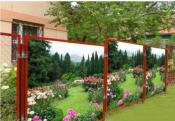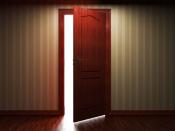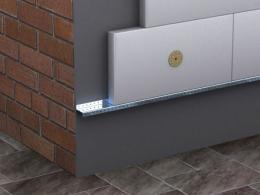Search
Login
Expanded polystyrene and thermal insulation in the house. Polystyrene foam insulation - this material is especially popular in its ease of use, frost resistance and comparative low cost
Heat insulation can be solved by insulating the walls of the building from the outside with expanded polystyrene plates, but is it really that simple with this heat insulator? Expanded polystyrene is a low-combustible and self-extinguishing insulation.
Content
- Preparation (warming) of the polystyrene foam base
- Polystyrene insulation of the walls of the house outside
- Polystyrene insulation of the walls of the house from the inside
- The result of our work
- An example of wall insulation polystyrene foam video
Preparation (warming) of the polystyrene foam base
The construction of any house begins with the construction of the foundation, on which everything depends.

The correct foundation will ensure the sustainability, monumentality of the structure. Of course, when pouring, you should pay attention to what kind of house will be, the width of its walls, height, foundation must withstand these loads and still have a margin of safety just in case.
Compliance with these rules is very important, regular 400 grade concrete is used, the most popular and reliable.
It is advisable to use reinforcement, then the foundation can withstand bending loads without breaking.
The process itself begins with the laying of the formwork, according to the width of the future walls and the dimensions exactly repeating, with small tolerances, the dimensions of the house in the project. Gradual popularity is gaining at home from fixed polystyrene formwork, it looks like this.
As you can see, the process of manufacturing and installing formwork does not differ from the use of other types of formwork.
However, there are some differences, for example, this formwork does not require removal after pouring and hardening. Acting as a heater.
When pouring, do not forget about openings for vents, otherwise your house will be excessively damp, which is not permissible, especially for a wooden house, which moisture will definitely not benefit.
Reinforcement is made at will, if your territory is not subject to excessive earth movements, for example, in the spring, various protrusions and dips, then reinforcing reinforcement is not necessary for a small house. But it’s better to play it safe, especially since it’s not difficult.

Now that the foundation is ready, the walls have been erected, we will move on to how to insulate the house from the outside with polystyrene foam.
Polystyrene insulation of the walls of the house outside
After the walls have been erected on the foundation and your house has been put under the roof, it is necessary to deal with its external design and insulation.
Warming the house from the outside with polystyrene foam is popular, light and easy to install material, it is convenient to lay such layers, it turns out evenly, you can fix it with any nails, screws, at your discretion.

After that, fill the holes from the fasteners, although this operation is not necessary, because after the insulation there will be an external finish, the coating with some materials and the insulation layer will not be visible, and apart from the aesthetic component, these holes do not affect anything else.

Warming a house with polystyrene foam can be done quickly, the process is not too time-consuming and complicated, does not require special knowledge.
As you can see, it turns out very smoothly and evenly, for the subsequent finishing everything will be prepared and it will also go well.

It will be possible to sheathe siding or something else, here, as the eye lies and the pocket allows. Warming a house with extruded polystyrene foam is convenient due to all its positive qualities, the cheapness of this material and its availability, the application began in Soviet times, and now it is only gaining popularity, changes are being made in manufacturing technology, improving them and the finished product itself, modern technologies only improve quality such material.
Polystyrene insulation of the walls of the house from the inside
Even despite the fact that in all new houses heating and other heating systems are carried out, this is not enough for proper insulation of the house. In any case, the interior should be covered with a layer of insulation.
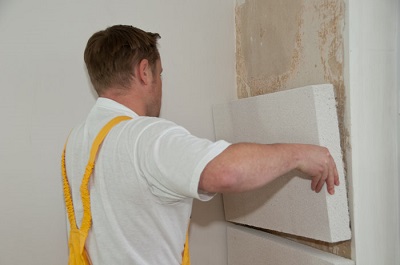
So we came to the question of how to insulate the house with polystyrene foam inside?
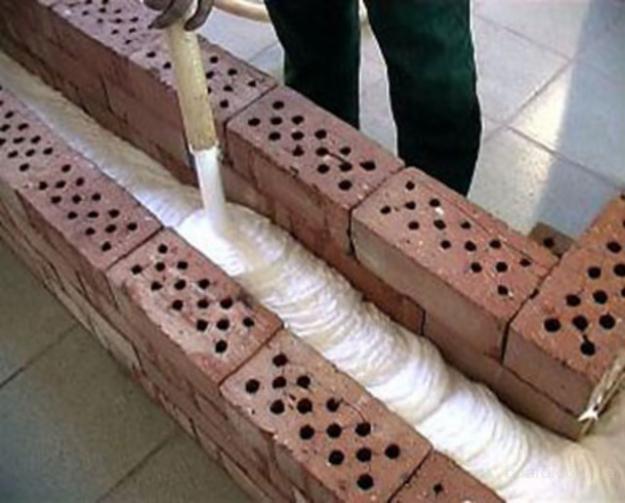
Laying polystyrene foam inside is even simpler than outside, the granular composition of the material, with the presence of cavities, allows you to retain heated air, not to let in cold air, all this has a beneficial effect on the atmosphere in the rooms.

As can be seen in the photo, we insulate the floor, slats that limit polystyrene foam will increase the rigidity and strength of the coating, for the next overlap it. The material is malleable, easy to process, cut, does not require special tools and equipment, can be laid in any place, with any protrusions and patterns, it will not be difficult to prepare expanded polystyrene for them.

The material has no harmful properties, so there is no need to worry about its environmental cleanliness. Approved for use by all regulatory organizations. Both floor and walls are insulated. Any room for any purpose, but with one limitation, away from open sources of fire and very hot objects, this can cause ignition or deformation of the material.
The result of our work
Warming a wooden house with polystyrene foam is not difficult, relatively cheap, it can be used both inside and outside the house.

Such a facade should turn out at the exit, scaffolding can not even be removed, they will be needed for the final finishing.

A significant improvement in the thermal insulation properties of the house will help you easily endure any winter with any frost. The material itself is also resistant to frost and precipitation.
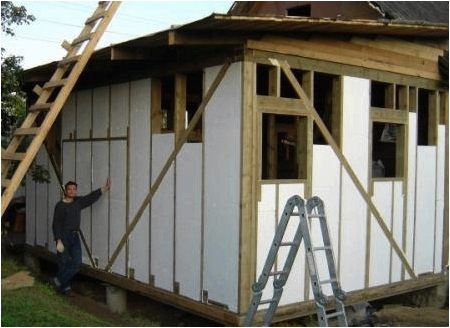
Mounting to a wooden base will be reliable, the wind is not removed. It does not violate the overall picture of the structure, practically does not make it heavier, does not bear any negative consequences from use.
